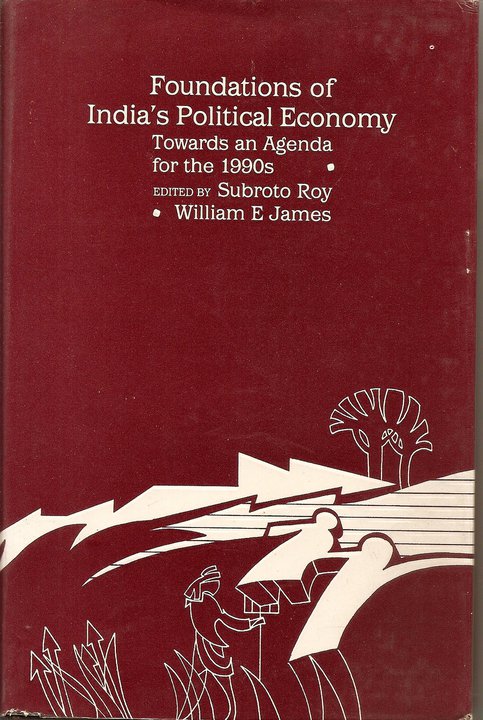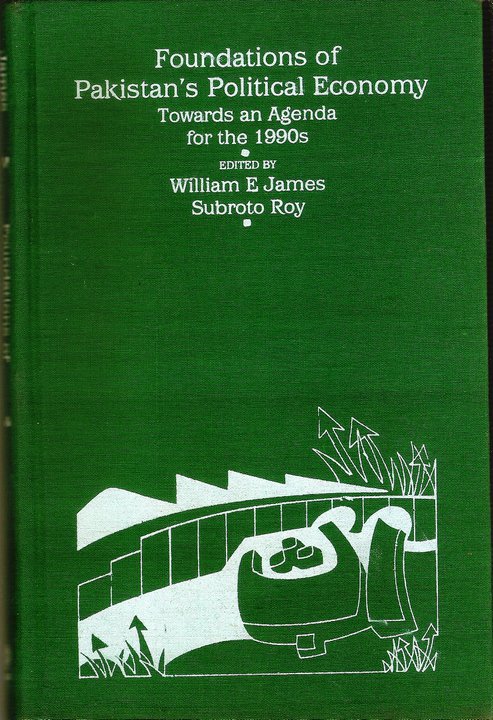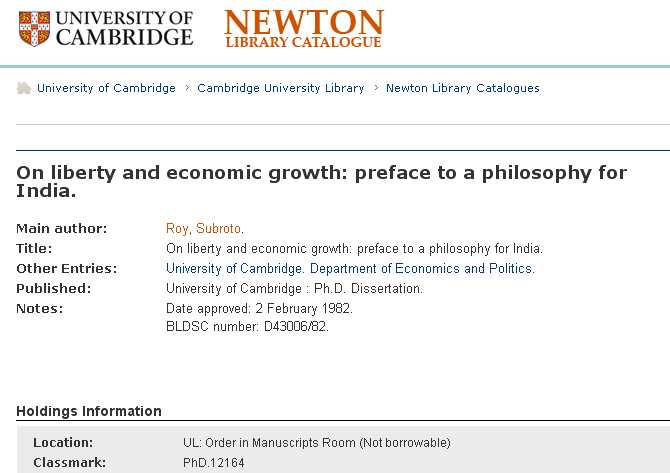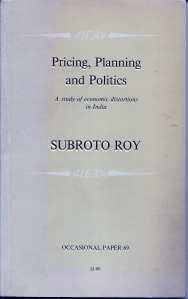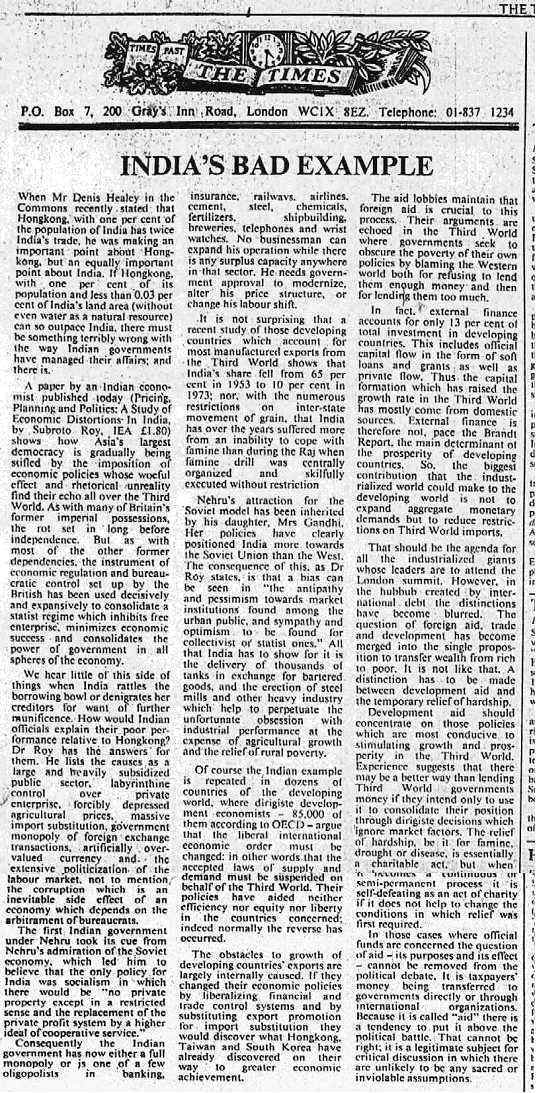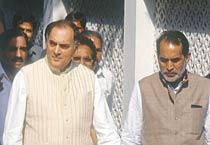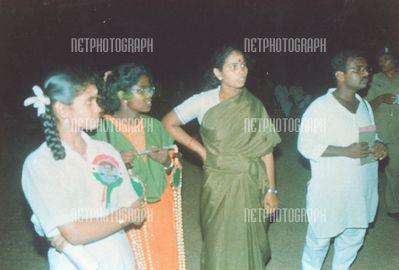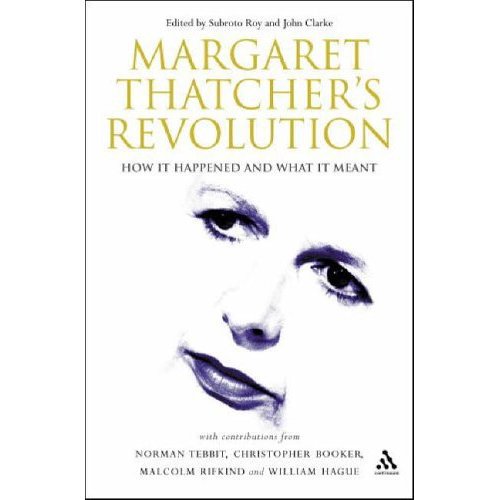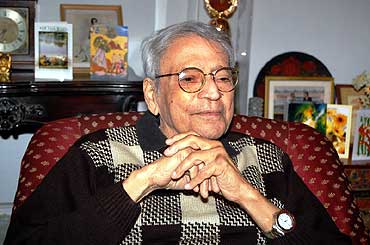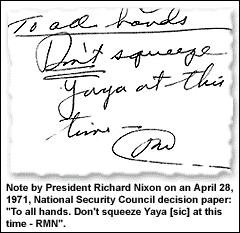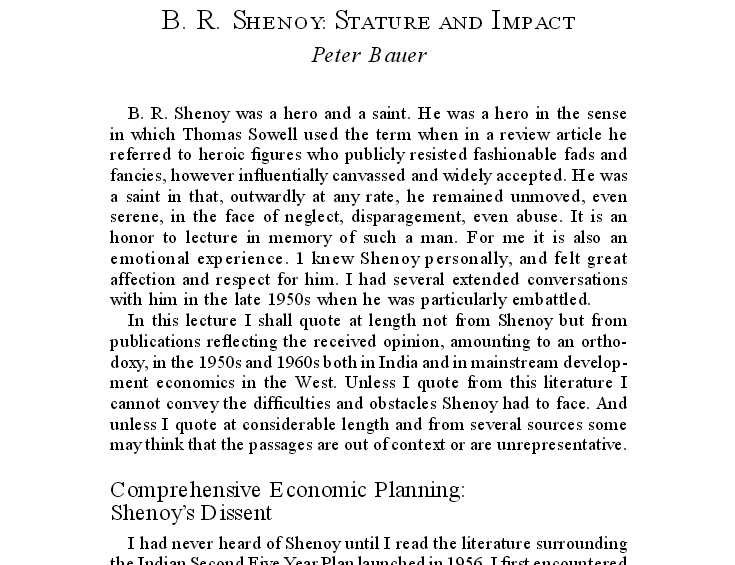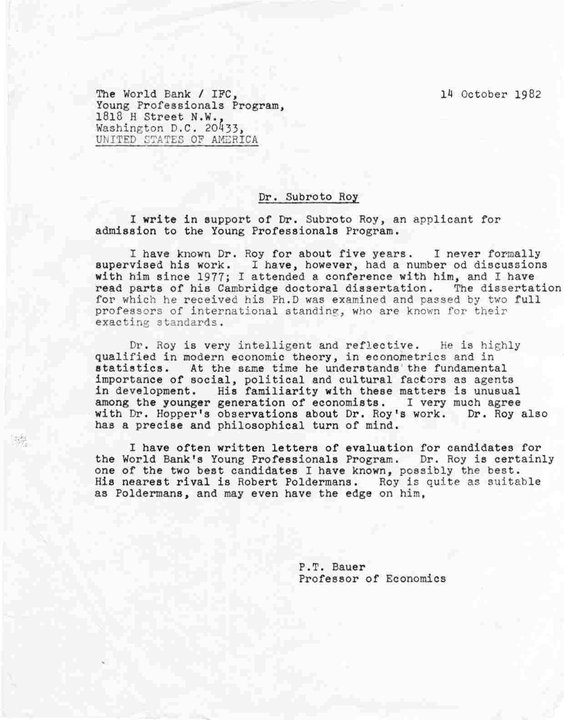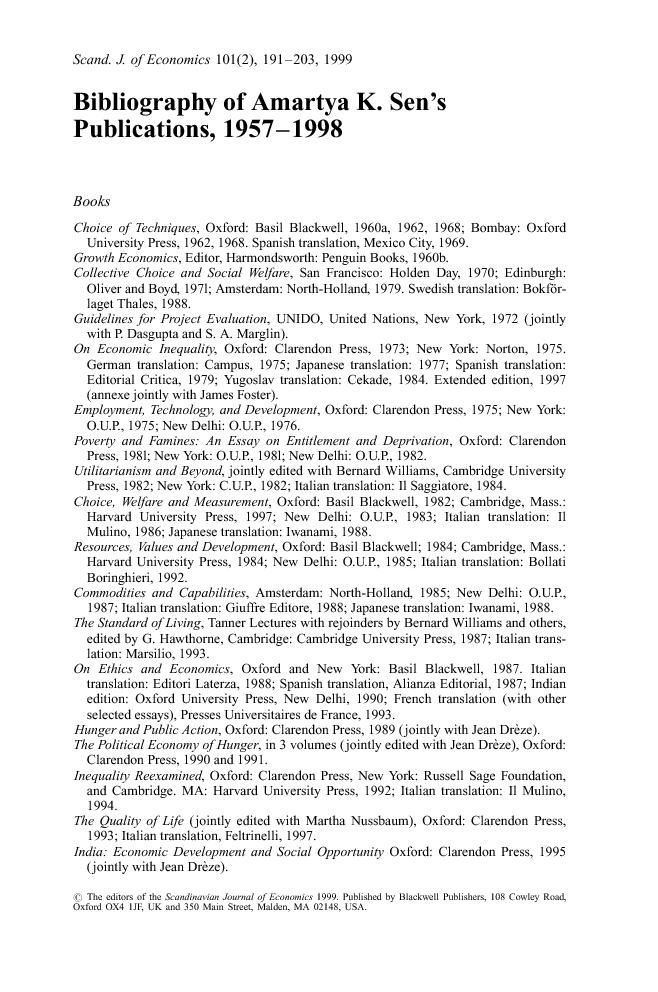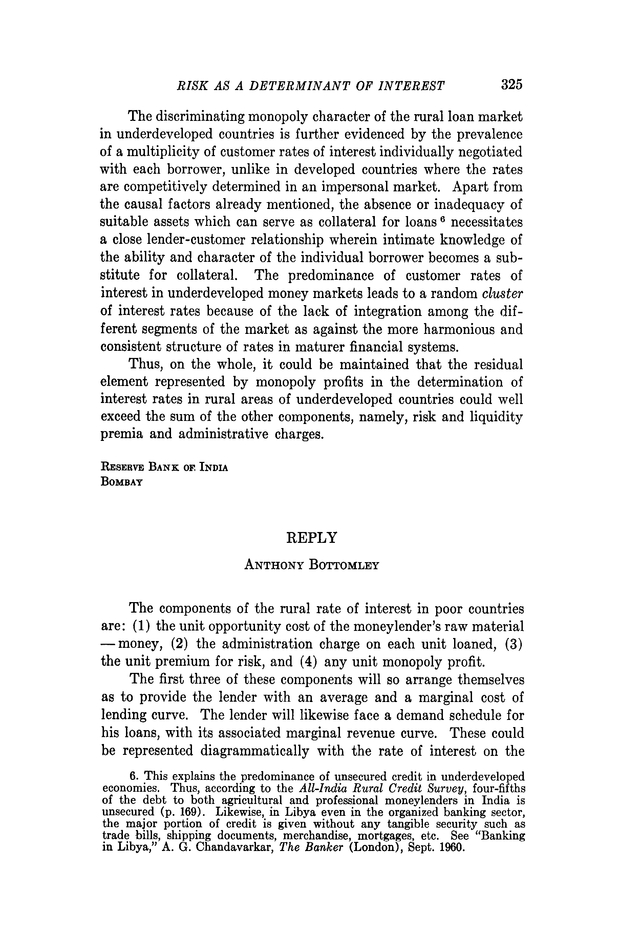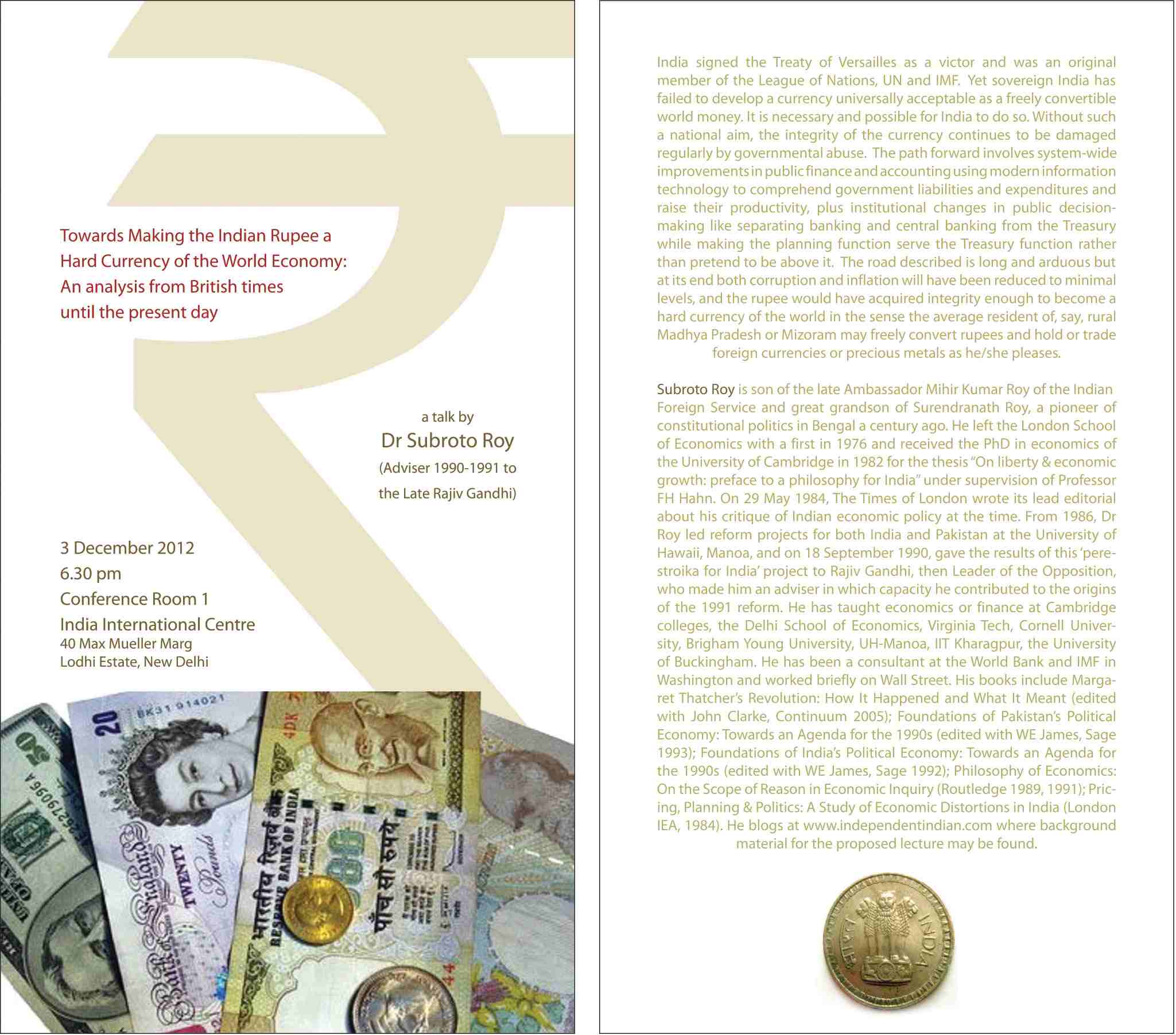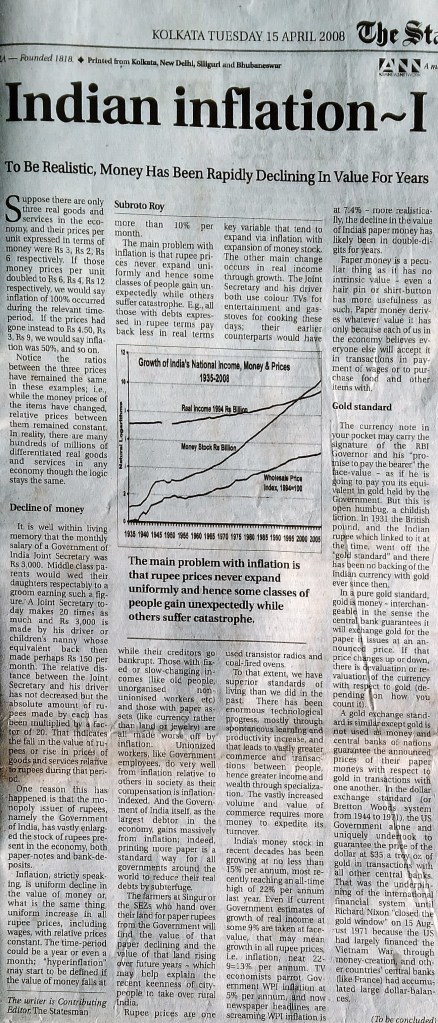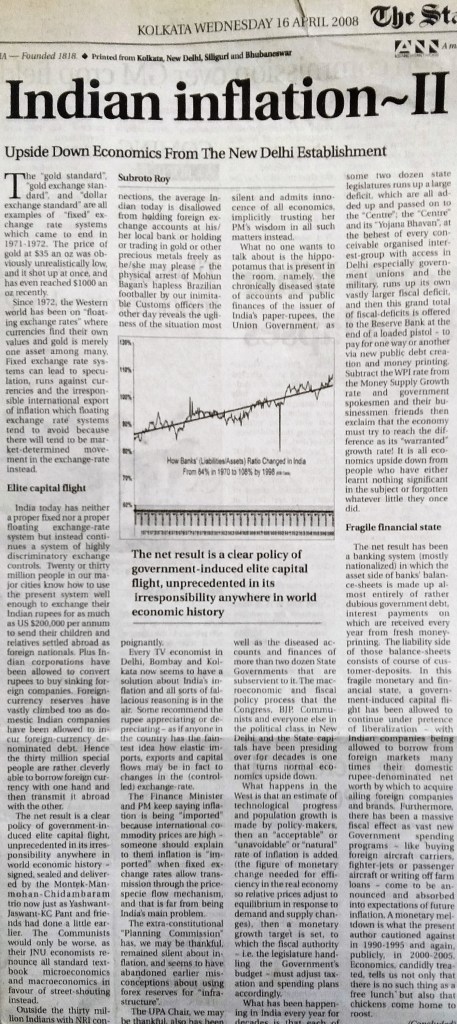October 27, 2005 — drsubrotoroy
Waffle but No Models of Monetary Policy:
The RBI and Financial Repression (A Stock Market on Steroids)
by
Subroto Roy
First published in The Statesman, Perspective Page, October 27 2005
If the average Indian citizen feels flummoxed at hearing all the fancy words from official spokesmen and the talking heads on TV and the expensive pink business newspapers — words like “credit offtake”, “liquidity”, “reverse repo rate” “medium term”, “inflation mandate” etc — there is help at hand. It is as likely as not that the purveyors are as flummoxed themselves even while they bandy these terms about in what has been passing for monetary policy in India in recent years. No one has any reliable economic models backed by time-series data to support all the waffle.
Here is an example.
The Government (and specifically the department of the Finance Ministry known as the RBI) will have us believe that the decline in the value of money that has been occurring in India has been at less than 5% per annum. According to official figures, the average Indian’s purchase of consumable goods and services (food, housing, clothing, transport etc) has been costing more every year by merely 5% at the very most. “What you can buy for Rs. 1000 in one year, you have to pay just Rs 1050 to buy the next year” is what the Government will have us believe. But is anyone’s personal experience of the diminishing value of the domestic currency in India consonant with what official spokesmen say inflation happens to be?
You may well reply that you cannot quite recall what Rs. 1000 bought for you last year. Precisely so. Nor really can anyone else — and that mutual collective loss of memory on the part of the public is something that India’s Government (like many other governments across time and space) has been literally banking on!
Consider a few very simple calculations. Suppose a citizen earns an annual income of Rs. 100,000, and an honest Government told him/her to pay total taxes (from both income and expenditure) of 10%. Clearly Rs. 90,000 would be left for the citizen to spend on his/her various choices of consumption or saving afterwards. If the citizen could assume the value of money was constant (inflation was 0%) then this Rs. 90,000 in one year would buy the same amount of goods and services the next year. But instead we may be living in a political system where the Government officially taxes very lightly, and then dishonestly taxes very heavily by reducing the value of money invisibly, i.e. by inflation. The Government may make the official tax-rate 8% and the actual inflation-rate 15%. The citizen who has Rs. 100,000 will then pay Rs. 8,000 in nominal taxes, but the Rs. 92,000 that is nominally left over for his own consumption and savings, will be made to decline by a further 15% every year.
I.e., a further value of Rs.13,800 (15% of Rs. 92,000) would effectively disappear as an invisible tax from the household budget due to the decline in the value of money, without the household being any wiser. In real terms, the household would have only Rs. 78,200 left.
Where would that extra value disappear to? Clearly, the beneficiary of this invisible extraction of real resources from household budgets would be the only entity that is able to compel the decline in the value of money, namely, the Government, which holds monopoly power to print the pieces of paper (at zero cost) that we call “money” and which we are forced by circumstances to use to expedite our real transactions of goods and services. Roughly speaking, that is how the Government’s own budget deficit gets financed in India.
I.e., the Government of India has its own (massive) expenditures — not merely on things like roads and bridges and military tanks and submarines, but also on ministers and bureaucrats’ wages etc., besides enormous interest payments on past debts incurred by the Government. If the expenditures exceed the visible revenues raised from taxation, as they have done by perhaps 40-50% or more every year for several decades, then the difference gets bridged by printing more paper money over which the Government has had a monopoly.
In India, a total of perhaps 18 million people work in all branches of government and a total of perhaps 12 million people work in the entire organised private sector. That makes 30 million people — with 4 dependants each, that accounts for perhaps 150 million people in the country. That leaves another 850 million people in our population of 1,000 million. Everyone, whether in the 150 million or the 850 million, rich and named or poor and anonymous, has had to use for his/her real transactions of goods and services the paper that the Government produces as money. By causing a decline in the value of this paper every year by x%, everyone who holds this paper, as well as assets denominated in this paper, suffers an invisible taxation of x% without quite realising it. The real revenue the Government of India extracts in this way is what has allowed it to balance its own books.
Furthermore, in the Indian case, what is said to be the inflation-rate and the actual inflation-rate experienced by ordinary people, may well be two different things. The wage-bill of those 18 million people employed by government agencies are linked directly to what official spokesmen say the inflation-rate is, so if the actual rate being experienced was higher and was announced as such, so would have to be that wage-bill and public expenditure! Official spokesmen may tell us the decline in the value of money has been merely 5% or less a year, so what cost Rs. 1000 last year costs Rs. 1050 this year, but as a matter of plain fact, the average citizen’s experience (and memory) may well tell him/her something different – e.g. that what cost Rs. 1000 last year, is in fact costing Rs. 1100 or Rs 1150 or Rs 1200 this year.
So much for the value of money. Now turn to interest-rates.
Here too, the average citizen need not be a rocket-scientist to know that relative to the Western countries, India is labour abundant and is capital scarce. Roughly speaking, that means we have relatively more people and fewer high-rise concrete buildings than the West does. Where then would you expect wages (the price of labour) to be higher, in the West or in India? Clearly in the place where labour is more scarce, namely, the West. And where would you expect interest-rates (the price of capital) to be higher? Clearly, where capital is relatively more scarce, namely India. Such was clearly the case between 1864 and 1926 (Fig. 1). Calcutta bank interest-rates were uniformly higher by about 2-3% than London bank interest-rates (in an era of zero inflation). But something wholly different occurred in the pseudo-socialist India after Independence. E.g., for the years 1975-1992 official Indian interest-rates (adjusted for inflation) were uniformly lower than those in world capital markets represented by the USA (Fig. 2). That remains true today. Not only have the higher wages of the West been attractive to Indians, so seems to be the higher real rates of return on capital! Hence everyone who could fled India – exporting their adult children and their savings abroad , leaving future generations of the anonymous masses with larger public debts to pay the bills in due course. There has been a flight of skilled labour and as well as capital flight from India — are foreigners going to come when they can see the Indian “elite” has fled? Official real interest-rates in India today may well be negative if inflation is properly measured, which would explain the Bombay stock-market boom the same way an athlete can perform better when on steroids.
Of course in the unorganised capital markets, actual real rates of return have always been higher in India than in the West and remain so. Just ask anyone in the unorganised capital markets how much he has to pay to rent machinery on a daily basis e.g. in the building or construction trade in an Indian city or small town or village. He will quote you rates of 2% or 5% or 10% — per day. Hence there is a massive distortion between what is happening in the unorganised capital markets all over the country and the official money markets the RBI believes itself to be presiding over in Bombay. Until the RBI starts to tell us frankly about this phenomenon, which is known to economists as “financial repression” and which has been caused by runaway Government spending programmes in India for decades, the average citizen may discount all the talk about a few basis points changing here and there on this or that nominal rate, in our pale imitation of what we think the US Fed or the European or British central banks do as policy. The truth is the RBI has never been allowed to model itself after those institutions. Instead, India has had nationalised commercial banking whose pampered inefficient management and staff have allowed the holding of massive amounts of government debt as assets in their balance-sheets, all denominated in an inconvertible controlled currency, and all presided over by a “one-tier” central bank patterned on the old Gosbank of the former Soviet Union, completely subservient to the dictates of the runaway spending that this or that particular set of politicians in power may demand. If there are dreams to be dreamt by honest economists in India, it would be for all that to be made to change.

